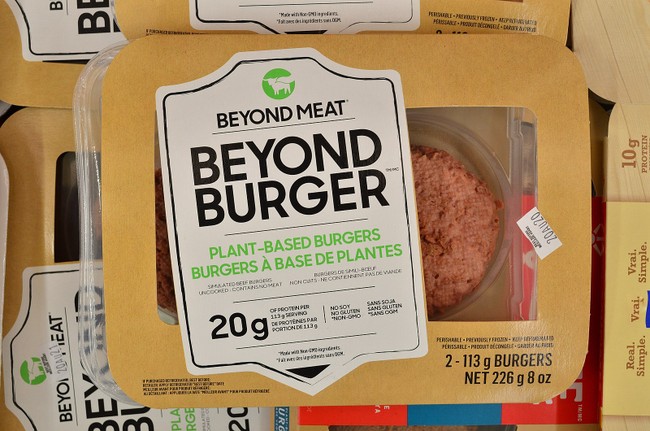
Faux meat-congealer Beyond Meat reported a bad third quarter last week; the company’s sales were hurt in part “by weak demand for its plant-based meat products,” according to Reuters, and that has The Street’s Daniel Kline arguing the company is ripe for Chapter 11 bankruptcy.
“The company does have time to fend off a Chapter 11 bankruptcy filing,” Kline wrote, “but it also has limited, if any, prospects to meet its impending cash needs.” The company has just $117.3 million in cash or equivalents, and debts of $1.2 billion.
The company announced layoffs and other cost-cutting measures, along with expanded distribution of the products that people are less interested in buying.
Yes, that’s a real thing that happened.
“Retail sales of refrigerated plant-based meat alternative products in the U.S. have fallen 17.2% so far this year, and frozen plant-based meat alternatives have fallen 8.1%,” Reuters added, and “growing concerns about processed foods are severely diminishing the appeal of Beyond Meat’s product line.”
How much appeal was there to begin with, though?
Plant-based “meat” sales were estimated at just $3.4 billion in 2024. Total U.S. beef sales last year are estimated to be $108 billion. And keep in mind that those figures aren’t a ribeye-to-ribeye comparison. Fake meat typically costs about twice as much per ounce as the real thing — although perhaps not this year, during a painful beef shortage — so we aren’t talking about similar units of stuff.
The Wayback Machine: ‘Plant-Based Peanut Butter’ Is a Thing People Buy, and I Can’t Stop Laughing
In other words, $3.4 billion in fake meat is about the same amount of actual food as $1.7 billion worth of the real deal. And please accept my sincerest apologies for stretching the meaning of “actual food” beyond recognition.
And the health benefits? Not so great, as I wrote last year:
Current vegan “meats” like Beyond Meat, Fauxjerky, Cow Patty’s, or I Can’t Believe It’s Not Sausage “can be high in salt, saturated fat, and additives in order to match the taste and texture of real meat products,” according to Haldar. His study showed that people who eat the stuff “also seemingly had worse blood pressure than their meat-consuming counterparts.”
“As it stands,” the study concluded, “the plant-based meat alternatives currently available do not offer [the] same health advantages as a traditional plant-based diet, generally consisting of whole foods such as whole grains, legumes and a plethora of fruits and vegetables.”
It’s been more than a year since Beyond Meat promised to improve the healthiness of its wares, which I described back then as a “sodium bomb” that had barely any less fat than the ground chuck I use for my burgers.
“Health is one of the top drivers to the plant-based meat category, and we feel a deep responsibility to deliver on that expectation for the consumer,” CEO Ethan Brown said at the time.
Consumers don’t seem to have responded.
Beyond Meat’s problems go deeper than worsening finances, lack of real-beef flavor, or questionable health benefits.
Fake meat products have been around since at least the introduction of those comically awful tofu burgers 50 or 60 years ago. But despite decades’ worth of advances in manufacturing techniques and materials science (yes, I’m trying to gross you out), the market for faux meat remains stubbornly small.
Faced with this year’s high beef prices, consumers are “protein-switching,” as they say in the industry, to chicken and pork — not to extruded vegetable alternatives.
So I don’t know whether Beyond Meat is doomed or not, but I still find myself wanting to say, “Stick a fork in it; it’s done.”
Recommended: Watch Tapper Grimace as He Beclowns Himself On Air Again
Want more than the headlines? Our VIP members get exclusive columns, deep-dive analysis, unfiltered podcasts, and live video chats you won’t find anywhere else. Join today and get 60% off with promo code FIGHT — because the other side never takes a day off, and neither do we.









